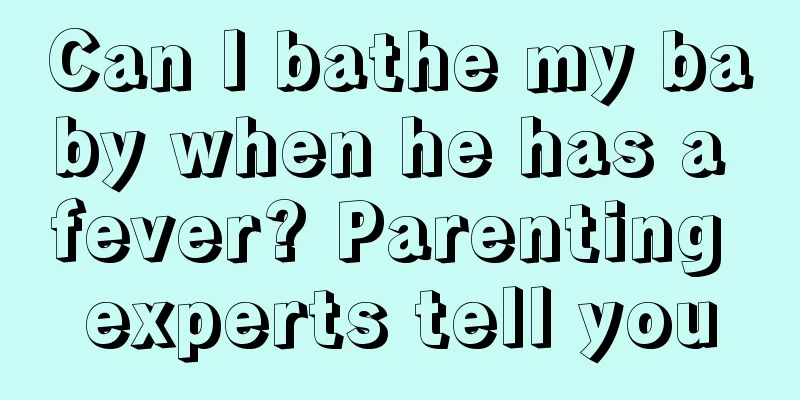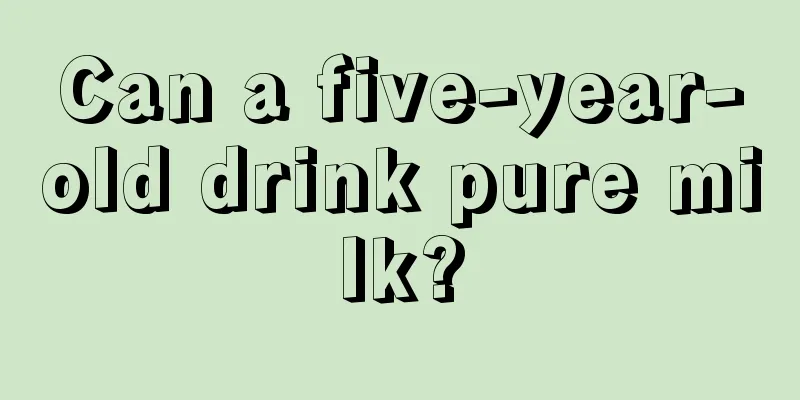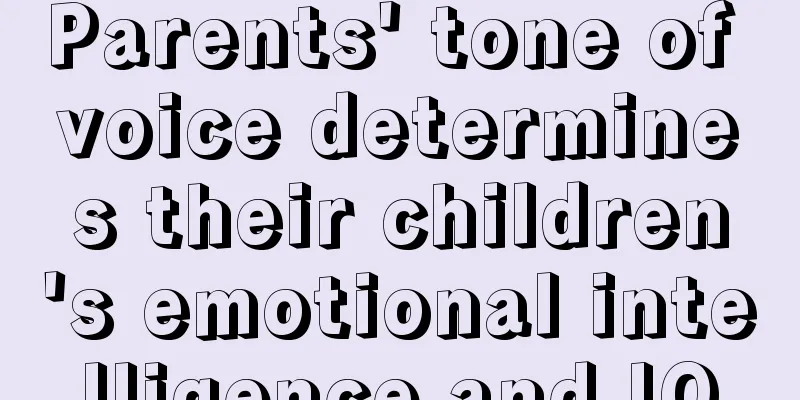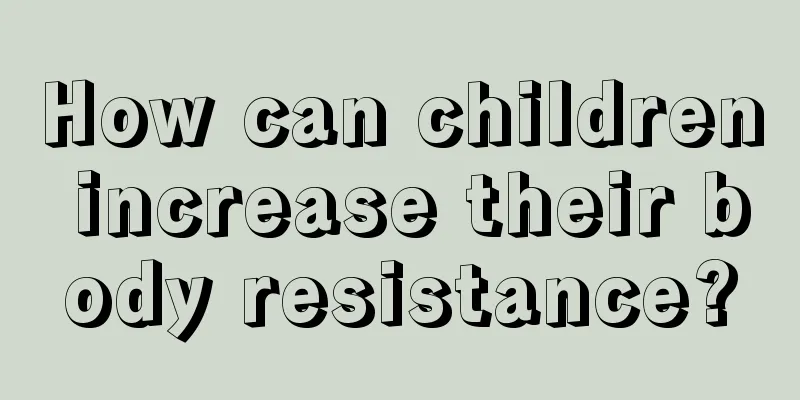Can I bathe my baby when he has a fever? Parenting experts tell you

|
Many parents think that they can give their baby a bath to cool down when he has a high fever, but this is not the right approach, especially when the weather is cold, it is best not to bathe a baby with a high fever, as it will not only fail to cool the baby down, but may also make the fever worse. 1. Don’t wash it in winter. The child's body temperature is not high to begin with, but catching a cold while taking a bath will cause the temperature to rise. Children can be given a bath if they have a fever in summer. A warm bath is equivalent to physical cooling. 2. If a two-year-old baby has a fever of 38 degrees, parents can try giving the child a warm water bath. Warm water sponge bath is suitable for children with body temperature of 38℃ or above to lower their body temperature. It is a simple and effective cooling method. The water temperature should be between 32℃ and 34℃, which is lower than the child's skin temperature and can quickly conduct and dissipate the child's skin temperature. 3. When taking a sponge bath, you can use massage techniques to stimulate the passive expansion of blood vessels and promote heat dissipation. Before a sponge bath, it is best to put an ice bag or a wet towel on the child's head to help cool it down, and a hot water bottle on the feet to prevent the epidermal blood vessels from contracting and causing congestion in the head in the early stages of the sponge bath. 4. At the beginning, you can wipe your arms first, from the outside of the neck to the back of the hand, and then from the armpit to the palm. Then rub your back, starting from the neck and moving to the entire back. Finally, rub your thighs, from the inner thigh roots to the soles of your feet. Measure your body temperature 30 minutes after rubbing to see the cooling effect. Note that during the sponge bath, if the baby shows chills or looks pale, stop immediately. 5. If a two-year-old baby has a fever of 38 degrees, parents don’t need to worry too much. Fever is the body's protective response against the invasion of foreign microorganisms, which is beneficial to enhancing the body's resistance. Therefore, there is no need to take antipyretics if the body temperature is below 38.5℃. Antipyretic measures are only needed when the body temperature exceeds 38.5℃. 6. Hello, I think that if a child does not take a bath, he or she will feel uncomfortable. If the child has a high fever, he or she can take a warm bath to reduce the fever. Guidance: If you are taking a bath, it is recommended to keep the time short. If the child is uncomfortable, drink more water and boiled water to physically cool down. If the body temperature drops after taking a bath, you don't need to take antipyretic drugs. 7. The four-year-old child currently has a high fever. For this phenomenon, the child should be given antipyretic medicine in time. He can take a bath but he must not get cold, otherwise it will easily cause convulsions or aggravate the cold. Guidance: Drink more hot water, take cold and anti-inflammatory medicines on time, and ensure your nutrition is comprehensive. |
<<: What should I do if my child has a stomachache? Teach you the correct way to do it!
>>: What should I do if my child has a continuous fever? Keep these methods in mind!
Recommend
Is it normal for a two month old baby to suck his fingers?
We always teach our children to pay attention to ...
What should I do if my child has a mild fever?
It is normal for children to have a low fever, es...
How to treat vulvar eczema in children?
If a child has eczema on his vulva, the impact wi...
Two-year-old baby early education
The education of children should start from infan...
Why are the baby's leg lines asymmetrical?
Every woman hopes that her baby can grow up healt...
How to educate precocious girls
Because it is developing, girls with early pubert...
Can children take ibuprofen for toothache?
Many children may experience toothache due to sym...
10-year-old child often has headaches?
Occasional headaches are very common in life, but...
How to correct a child's hunchback when walking
The bones of teenagers are in their prime. At thi...
Why is it difficult for babies to fall asleep?
Some babies have trouble sleeping due to other pr...
What to do if children have nephritis?
Childhood nephritis is an emergency condition. Th...
What causes dizziness in children?
Dizziness and headache are diseases that often oc...
Causes of dark circles under children's eyes
The physical health of children is an issue that ...
Symptoms of children sweating at night
It is common for babies to sweat during sleep, an...
Will there be sequelae if a child has a fever and convulsions?
Fever is a disease that we often encounter in our...









